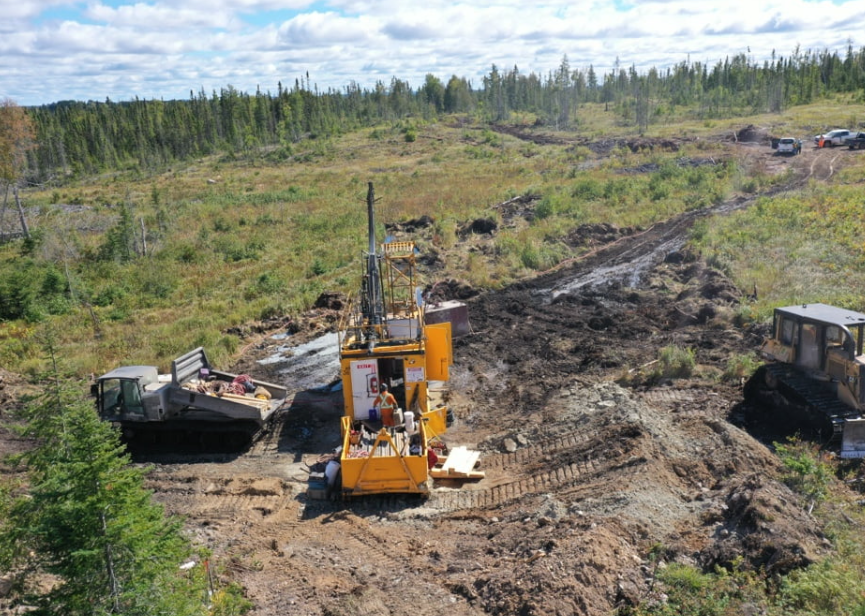A Timmins nickel explorer estimates there are 1.6 billion pounds of nickel to be mined over 20 years from its Shaw Dome project, outside Timmins.
EV Nickel posted the results of a preliminary economic assessment (PEA) of its CarLang A nickel deposit on its 30,000-hectare property, 30 kilometres southeast of the city.
With a grade of 0.24 per cent nickel, the Toronto company tabled some details of a potential large-scale, low-grade open-pit mine and processing plant in a May 5 news release.
In a statement, John Paterson, EV Nickel’s CEO and interim president, said the PEA shows the “excellent potential” of CarLang A. Since the nickel resource is near surface, it would only require “moderate” capital investment to push it into production.
The initial capital costs to build the mine, mill, tailings site, provide other infrastructure, and tack on the closure costs would amount to more than $3.1 billion of the total $4.6-billion project.
“The shallow overburden cover and low strip ratio significantly reduces the overall Capex (capital expenditure) of the CarLang A project and allows for a rapid ramp-up of production to meet the 120,000 tonnes per day mill design," Paterson said.
In mining vernacular, overburden refers to the layers of soil, rock and other materials — considered uneconomic — above a deposit or ore body that must be removed to access the valuable material. The strip ratio is simply the amount of overburden that must be removed to extract the ore.
The company said the project sports “robust” economics at $681 million of annual EBITDA and $360 million of annual free cash flow over 20 years of production.
“Excited by these results,” Paterson and the company said in a news release that they are starting baseline environmental studies and the government permitting process.
EV Nickel maintains it has only scratched the surface of the property’s potential as the CarLang A deposit sits on a trend that may host more “high-quality, large-scale nickel deposits” that further exploration will prove out.
Paul Davis, vice-president of exploration, said the area around the CarLang A deposit could be opened up into a “significant area of multiple large-scale zones of nickel mineralization with similar, or better, nickel grades and recovery characteristics as the CarLang A deposit.”
Davis said they’ve already identified more nickel zones along a trend that could be developed in sequence over time to feed a central processing mill while limiting the overall environmental impacts.
“The CarLang Trend potentially represents an area that could host large-scale nickel zones that would continue for multiple decades within a contiguous, well-defined area that could feed a single processing facility, just south of Timmins, Ontario," he said.
Average annual production would be 83 million pounds of nickel, 615 million tonnes of iron, 36.7 million pounds of chrome and 31,000 pounds of cobalt.
A potential mine would produce two products: a high-grade nickel concentrate, estimated at 25 per cent nickel, and a magnetite concentrate made up of 48 per cent iron and 1 per cent chromium.
A processing plant on the site would consist of crushing, grinding, desliming and flotation operations, similar to other nickel operations, and run at a capacity of 120,000 tonnes per day. The pit mining method would use conventional trucks and shovels.
The company likes that one can drive down the Langmuir logging road to the site, that there’s rail access nearby, and there’s regional three-phase power lines that they could tie into.




